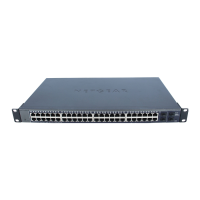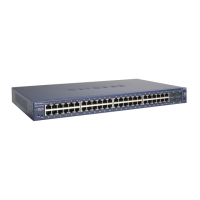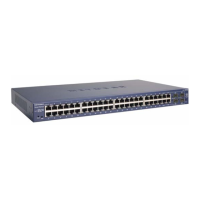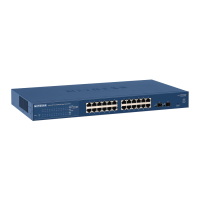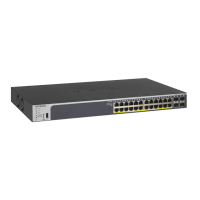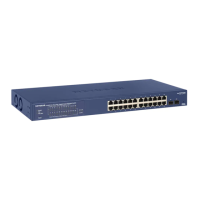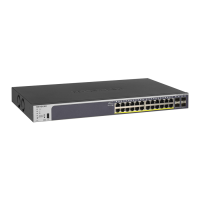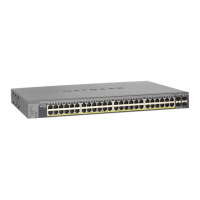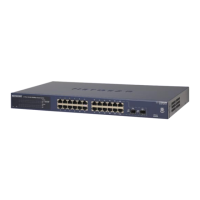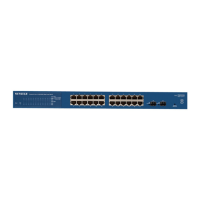281
GS748T Smart Switch
4. From the IP Rules screen, create a second rule for IP ACL 1 with the following settings:
• Rule ID: 2
• Action: Permit
• Match Every: True
5. Click Add.
6. From the IP Binding Configuration page, assign ACL ID 1 to the Ethernet ports 2, 3, and 4,
and assign a sequence number of 1 (See
IP Binding Configuration on page 221).
By default, this IP ACL is bound on the inbound direction, so it examines traffic as it
enters the switch.
7. Click Apply.
8. Use the IP Binding Table screen to view the interfaces and IP ACL binding information (See
IP Binding Table on page 222).
The IP ACL in this example matches all packets with the source IP address and subnet mask
of the Finance department's network and deny it on the Ethernet interfaces 2, 3, and 4 of the
switch. The second rule permits all non-Finance traffic on the ports. The second rule is
required because there is an explicit deny all rule as the lowest priority rule.
Differentiated Services (DiffServ)
Standard IP-based networks are designed to provide best effort data delivery service. Best
effort service implies that the network deliver the data in a timely fashion, although there is no
guarantee that it will. During times of congestion, packets may be delayed, sent sporadically,
or dropped. For typical Internet applications, such as e-mail and file transfer, a slight
degradation in service is acceptable and in many cases unnoticeable. However, any
degradation of service has undesirable effects on applications with strict timing requirements,
such as voice or multimedia.
Quality of Service (QoS) can provide consistent, predictable data delivery by distinguishing
between packets that have strict timing requirements from those that are more tolerant of
delay. Packets with strict timing requirements are given special treatment in a QoS-capable
network. With this in mind, all elements of the network must be QoS-capable. If one node is
unable to meet the necessary timing requirements, this creates a deficiency in the network
path and the performance of the entire packet flow is compromised.
There are two basic types of QoS:
• Integrated Services: network resources are apportioned based on request and are
reserved (resource reservation) according to network management policy (RSVP, for
example).
• Differentiated Services: network resources are apportioned based on traffic classification
and priority, giving preferential treatment to data with strict timing requirements.
The GS748T Smart Switch supports DiffServ.
